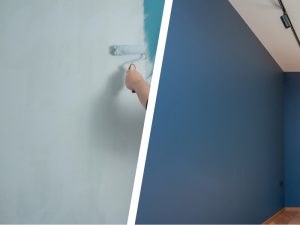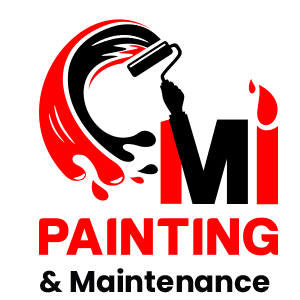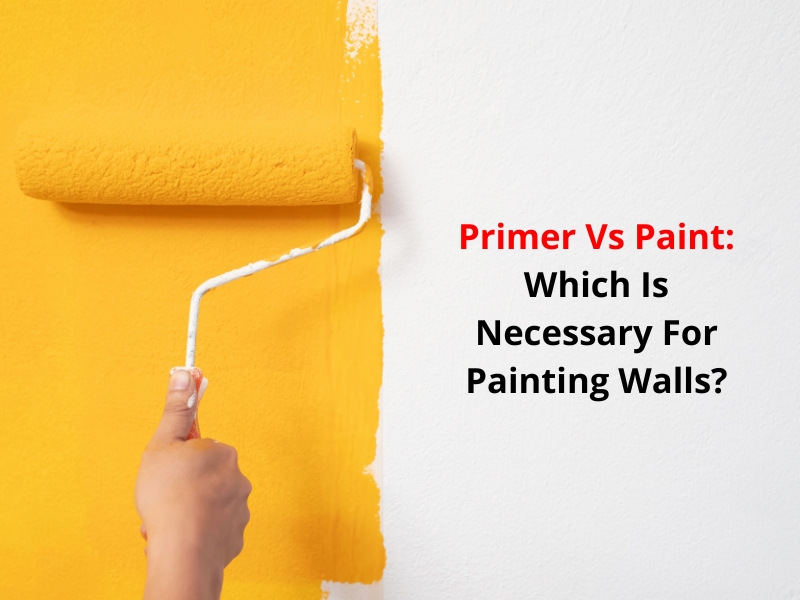Primer vs. paint: the age-old question for DIY enthusiasts. Choosing primer and paint can be overwhelming when embarking on a home painting project. Both play crucial roles in transforming your walls, but understanding their specific functions is essential for achieving a durable and visually appealing result.
This article explores the primer vs. paint dilemma, exploring their roles, differences, and when to use each.
What is primer?
Primer is the unsung hero of any paint job. It’s a preparatory coat applied to a surface before painting to create an optimal foundation for the topcoat. Think of it as the canvas for your masterpiece. In addition, it enhances paint adhesion, durability, and overall finish while protecting the underlying surface from stains and damage.
Primer types vary depending on the surface you’re working with. Latex primer is ideal for drywall, while oil-based or shellac primers excel on surfaces like wood and metal. Choosing the suitable primer ensures optimal results for your specific project.
What is paint?
Paint is a liquid composition that dries to form a protective, decorative film on a surface. It’s a blend of pigments that provide:
- Colour
- Binders that create the film
- Solvents that control the paint’s consistency
The result? A versatile product that enhances aesthetics, safeguards surfaces, and adds texture.
Paints come in many options, from the classic matte to the high-gloss finish. Water-based latex paints are famous for their ease of application and cleanup. In contrast, oil-based paints are prized for their durability and smooth finish. Understanding these differences and the basics of colour theory is crucial when choosing the right paint for your project.
What are the differences between primer and paint?

Understanding the roles of primer and paint is essential for a successful painting project. Primer prepares the surface, enhancing paint adhesion, while painting provides colour and protection. Here are the key distinctions between primer and paint and when each is crucial:
When is primer essential:
Contrary to popular belief, a thick coat of paint can only partially replace primer. However, paint offers benefits that primer cannot match.
- New drywall: Fresh drywall is highly porous, so it must be primed to prevent paint absorption and ensure even coverage.
- Dramatic colour changes: Primer creates a neutral base, crucial when transitioning from dark to light colours.
- Stained surfaces: Primer effectively seals stains like watermarks, nicotine residue, or old paint, preventing them from bleeding through.
- Glossy surfaces: Primer provides a “tooth” for paint to adhere to, preventing peeling on smooth surfaces like glossy paint or tiles.
- Uneven or damaged walls: Primer helps create a smooth, uniform surface, masking minor imperfections for a flawless finish.
When primer might not be necessary:
While primer is generally recommended, there are exceptions:
- Minor touch-ups: A primer might be optional if you use the same colour on a small, undamaged area.
- Low-traffic areas with light colours: Primer may be skipped in spare bedrooms or other low-use spaces painted with light colours.
However, even in these cases, using a primer is often beneficial. It enhances paint adhesion, creates a smoother finish, and extends the life of your paint job. When in doubt, it’s always wise to prime.
How does the application process differ between primer and paint?
While skipping primer might seem tempting, applying it is crucial for achieving a durable and professional finish. While primer and paint involve similar application methods, distinct differences impact the overall outcome.
- Primer application: Primer is typically applied using a sprayer, roller, or brush. One to two coats are generally sufficient. It dries relatively quickly, often within a few hours, allowing you to begin painting sooner.
- Paint application: The method of application depends on the desired finish. Brushes, rollers, or sprayers can be used. The number of coats required varies based on different types of paint, surface area, and desired coverage. For instance, smooth or eggshell finishes may necessitate multiple coats compared to satin or semi-gloss options.
Proper drying time is essential for both primer and paint. Factors like paint type, humidity, and ventilation influence drying times. Always allow adequate drying before applying subsequent coats to ensure optimal results.
Remember: While application methods share similarities, primer and paint serve distinct purposes. Primer creates a foundation for better adhesion, while painting provides colour and finish.
How does the cost compare between primer and paint?
Initial costs
Primer often has a lower price tag per gallon than paint. While this might tempt you to skip it altogether, the potential long-term savings far outweigh the upfront cost. Without primer, you’ll likely need more coats of paint to achieve adequate coverage, increasing your overall material expenditure. Additionally, the extra time spent applying multiple coats can impact your labour costs, whether you’re doing it yourself or hiring a professional.
Long-term savings
Primer acts as a protective shield for your walls. Sealing the surface prevents stains, moisture, and other damage from penetrating the paint. This significantly extends the life of your paint job, resulting in less spending on repainting and repairs in the long run. Investing in a quality primer can save you money and headaches.
The final brushstroke
While paint often steals the spotlight, primer is the unsung hero of any successful painting project. Neglecting its importance can lead to a disappointing finish. By understanding the crucial role primer plays in creating a solid foundation for your paint, you’ll be well on your way to achieving professional-looking results.
With knowledge about primer vs. paint, you can confidently tackle your next DIY home improvement project. Remember, extra effort in the priming stage can yield a world of difference in the outcome.
But if you’re looking for expert wall painting without the hassle, consider hiring professionals. Mi Painting & Maintenance offers top-notch painting services in Sydney. Our team of skilled painters can transform your space with precision and care. Contact Mi Painting & Maintenance today, and let us bring your vision to life.

